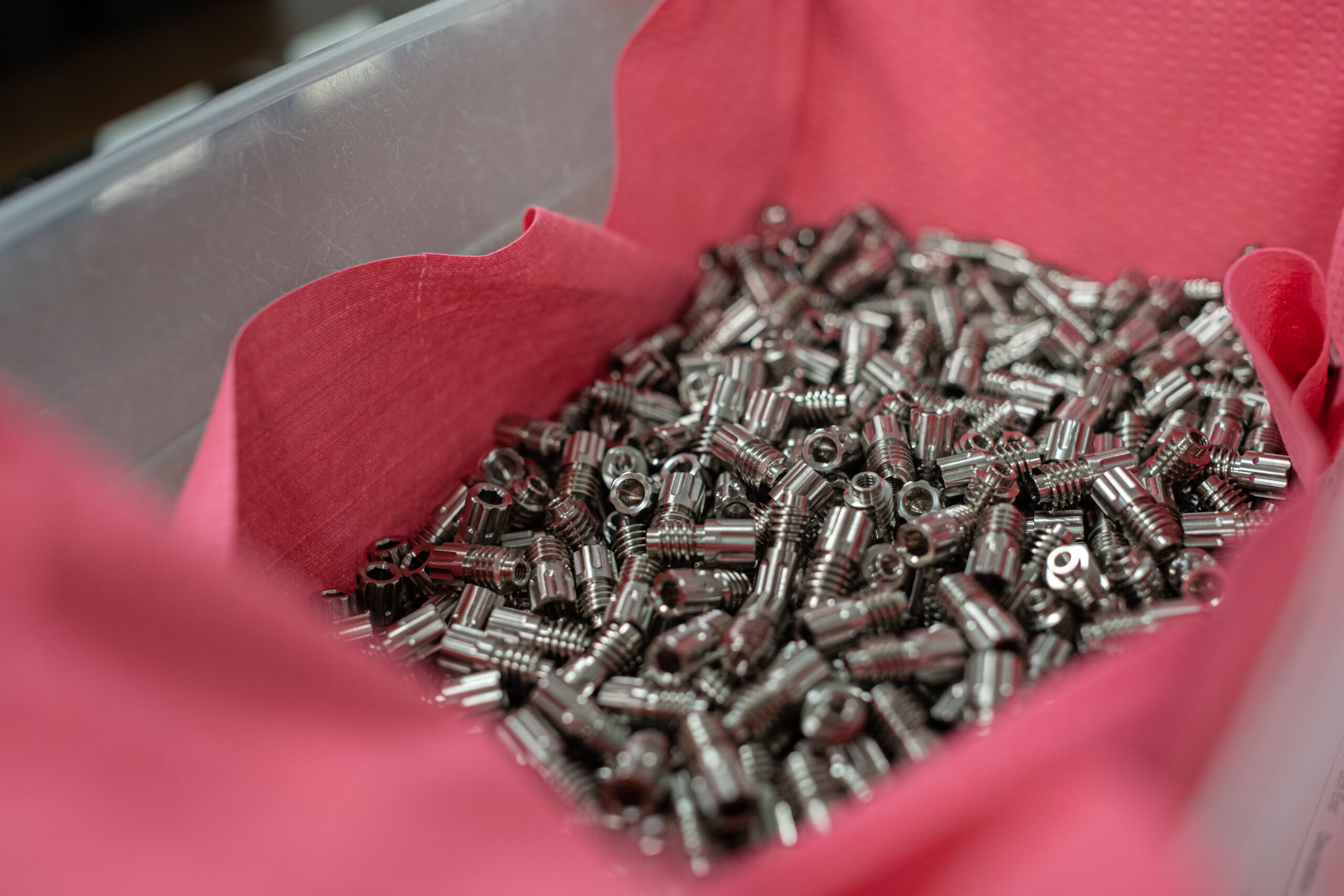An Automated Parts Carousel can help you keep completed parts counted and organized without any manual effort. They capture parts right as they complete in the machine, and keep them stored in bins according to your programming. What does our Manufacturing Engineer think of them? Find out from Brad now!
Video Transcript:
”
What’s up, everyone? I’m Brad Thompson here with China Precision Parts Corp. and today we’re going to give you a quick demo on our automated parts carousel. Great concept, good idea. Definitely a way that you could improve your quality and reduce your costs–if it worked right.
This is an automated parts carousel. It’s a component that sits at the end of your machine, and it collects pieces, and can rotate without any sort of effort or manual input from a person.
This one here happens to be the model ST-22. “ST” meaning Smart Table. It’s manufactured by PressureTech, and distributed by iSwiss. These units come in two sizes; again this is the ST-22. There is an ST-15 as well. The ST-22 has 14 part catchers on top, while the ST-15 only has 6. It really depends on the footprint of the area you have on which one you want to utilize. [All Smart Tables] come with three modes of operation. They can either be set on a timer, a parts counter, or hook it up directly to the machine and utilize M-code.
If you work in a shop, you’ve probably seen an automated parts carousel before. The reason we’ve gone with the ST-55 specifically was because we’re able to recycle the oil. If you look at these bins, you’ll notice these perforated holes. These holes allow the oil to drain into the machine, and then on the bottom there’s a hose that we’ve snaked back into our machining center. This way we can recycle the oil throughout the week.
As I said before, this is a quality tool. The whole idea here is that you don’t have to manually come back and forth between what you’re doing, and the parts coming out of the machine, to make sure you don’t got a big pile piling up. As the parts come out, they get collected in these bins. You set the machine up to go on counters, or timer, or M-code from the machine. [The ST] will collect a certain number; whatever you set it to. Then eventually this carousel will rotate to the next bin. That saves the operator again from having to come down and check on things every so often.
It also helps with quality. If you can imagine: you just had a bucket here and you went all day making parts. One of them ended up being bad, and now you’ve got possibly thousands of parts to sort through. Whereas here [with an ST], you’ve got lots of a significantly smaller quantities. 20 to 50, whatever you want to set it at. If you encounter an issue, now you’re only sorting 20 parts as opposed to thousands. You’re going to save on time. You’re gonna save on scrap. Ultimately it’s going to improve the quality going out of your shop, and save you a couple bucks in the end.
Smart Tables don’t come without their drawbacks. This ran us about $5000, and for as much as I spent on it, I expected a little bit better quality. The issue I have with it is that its whole main purpose is to collect parts reliably. Right now, it doesn’t do that. Let me show you why. If you watch, you’ll notice there’s a lot of slop or compliance in this machine here. It’s got a proc switch over in the corner that’s counting to make sure that when it rotates, it rotates the correct amount to go to the next bin. However, because it has so much slop, if you let this go and you don’t keep an eye on it for too long it’s possible you could end up [off track], something like that, and now you got parts all over the floor. That I can’t have: for something that’s meant to be a quality device, it’s causing me quality issues unless I keep an eye on it.
It’s great concept. Awesome way to try and collect parts in a way that’s going to improve quality and reduce costs. Unfortunately, quality of the machine itself just isn’t quite there yet. In the future, if those small things can be cleaned up, you might see a lot more of these in our shop.”

